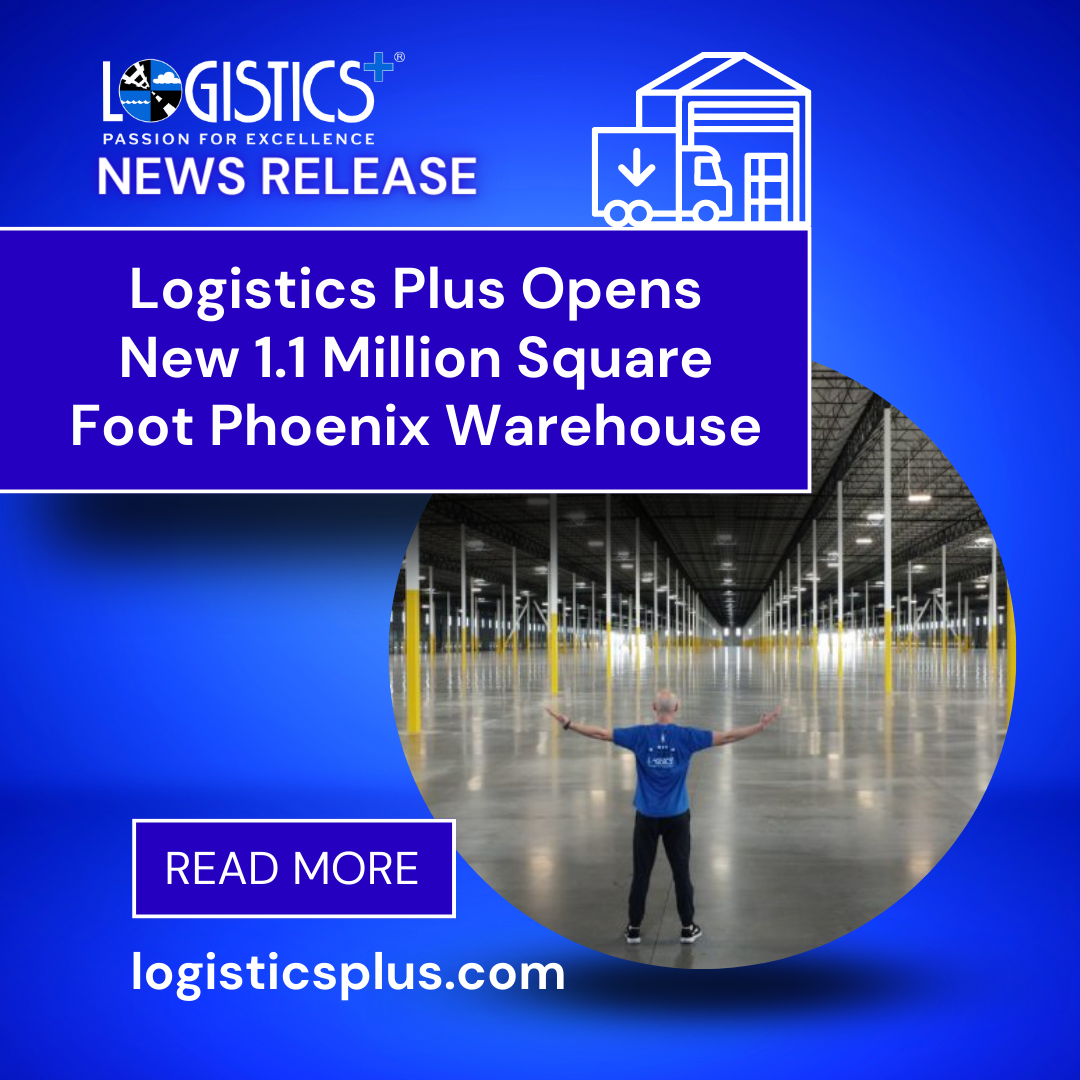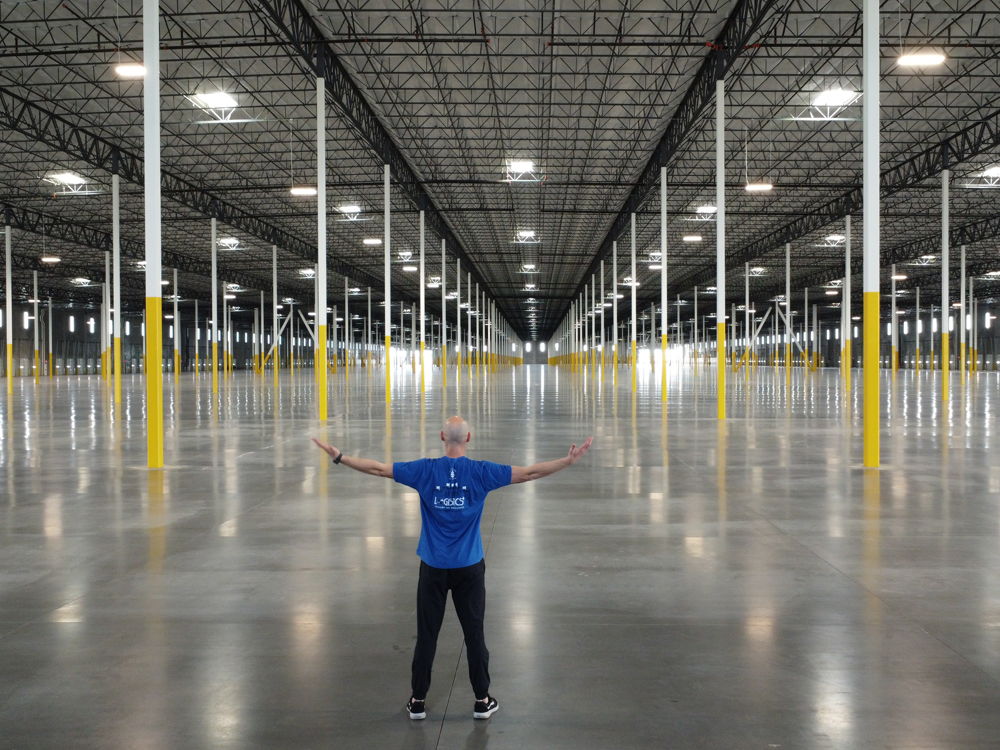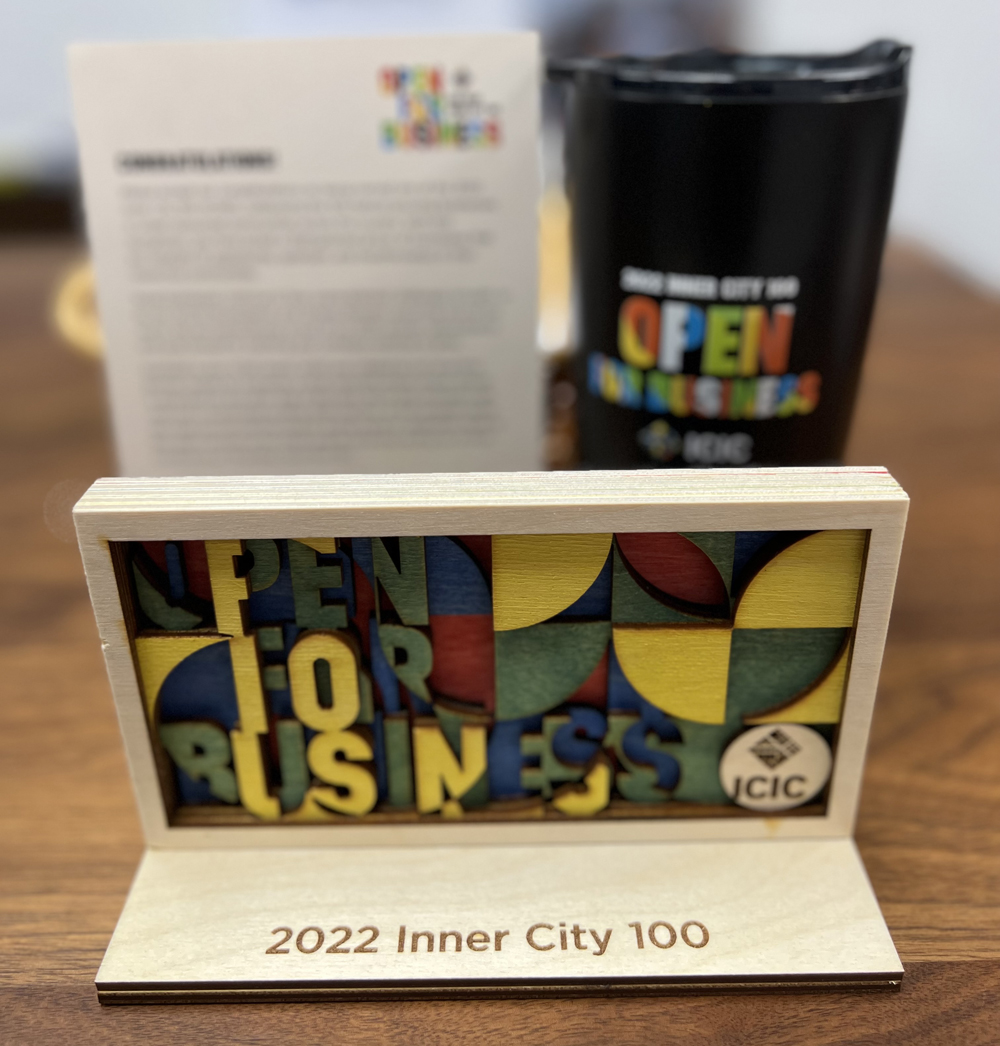
by logisticsplus | Dec 19, 2022 | News

(Click to view our holiday card)
The Logistics Plus team would like to wish everyone a joyous holiday season and a happy New Year! As always, we thank you for your continued support, business, partnerships, and loyalty. Our success wouldn’t be possible without YOU.
As a reminder, our U.S. operations will be closed for the holidays on December 23rd and 26th in celebration of Christmas. We will also be closed on January 2nd to celebrate the New Year.
If you haven’t yet worked with Logistics Plus, we invite you to tell us your most pressing logistics or supply chain challenge and give us a try in 2023. We put the ‘plus ‘in logistics by doing the big things properly, plus the countless little things that ensure complete customer satisfaction and success.
Our year-end 2022 Happy Holidays video can be seen below or on the Logistics Plus YouTube Channel.
Do you have any last-minute questions or concerns? Let us know how we can help!


by logisticsplus | Dec 15, 2022 | News
FOR IMMEDIATE RELEASE
Logistics Plus Opens New 1.1 Million Square Foot Phoenix Warehouse
The new warehouse is next to the company’s existing 543 thousand square foot Phoenix facility.
 ERIE, PA (December 15, 2022) – Logistics Plus, Inc. (LP), a leading worldwide provider of transportation, logistics, and supply chain solutions, is pleased to announce the opening of a new 1.1 million square foot warehouse in the greater Phoenix area. The new warehouse, located at the NEC Loop 303 and Bethany Home Road intersection in Glendale, Arizona, is adjacent to the 543 thousand square foot warehouse Logistics Plus opened earlier in the year.
ERIE, PA (December 15, 2022) – Logistics Plus, Inc. (LP), a leading worldwide provider of transportation, logistics, and supply chain solutions, is pleased to announce the opening of a new 1.1 million square foot warehouse in the greater Phoenix area. The new warehouse, located at the NEC Loop 303 and Bethany Home Road intersection in Glendale, Arizona, is adjacent to the 543 thousand square foot warehouse Logistics Plus opened earlier in the year.
Logistics Plus now has 18 fully managed commercial warehouses in the U.S., comprising 5 million square feet of storage space. The company also manages many additional virtual and commercial warehouses worldwide.
The new “LP PHX 2” warehouse is in a growing industrial development region northwest of Phoenix. The facility features quick freeway access, 395 trailer stalls, and 40-foot ceilings and is only a six-hour drive from the Los Angeles/Long Beach ports. Tom Kelly, Regional Director of Sales and Operations for Logistics Plus, will oversee the move-in and ongoing management of the operation, in addition to the company’s other Phoenix and four southern California warehouses.
“As other logistics companies slow down or reduce their warehousing footprints, we are doubling down to meet the current and future needs of our customers,” said Yuriy Ostapyak, COO for Logistics Plus. “We still see strong demand for our commercial warehousing solutions in key verticals, and we expect that growth to continue. Our new, second Phoenix warehouse will allow us to keep pace with that growth.”
Earlier this week, Multichannel Merchant named Logistics Plus a 2023 Top 3PL for e-commerce warehousing and fulfillment solutions. View a map of all Logistics Plus U.S. warehouses at www.logisticsplus.com/warehouse-map.
About Logistics Plus, Inc.
 Logistics Plus, Inc. is a 21st-century logistics company that provides freight transportation, warehousing, fulfillment, global logistics, business intelligence, and supply chain management solutions through a worldwide network of talented and caring professionals. Jim Berlin founded the company nearly 26 years ago in Erie, PA. Today, Logistics Plus is a highly regarded, fast-growing, and award-winning transportation and logistics company. With its trademark Passion For Excellence™, Logistics Plus employees put the ‘plus’ in logistics by doing the big things properly, plus the countless little things that ensure complete customer satisfaction and success.
Logistics Plus, Inc. is a 21st-century logistics company that provides freight transportation, warehousing, fulfillment, global logistics, business intelligence, and supply chain management solutions through a worldwide network of talented and caring professionals. Jim Berlin founded the company nearly 26 years ago in Erie, PA. Today, Logistics Plus is a highly regarded, fast-growing, and award-winning transportation and logistics company. With its trademark Passion For Excellence™, Logistics Plus employees put the ‘plus’ in logistics by doing the big things properly, plus the countless little things that ensure complete customer satisfaction and success.
The Logistics Plus® network includes offices, warehouses, and agents located in Erie, PA; Aurora, CO; Buffalo, NY; Charlotte, NC; Chicago, IL; Chino, CA; Cincinnati, OH; Cleveland, OH; Colton, CA; Dallas, TX; Dayton, NJ; Des Moines, IA; Fontana, CA; Haslet TX; Honolulu, HI; Houston, TX; Jamestown, NY; Laredo, TX; Lexington, NC; Los Angeles, CA; Meadville, PA; Miami, FL; New York, NY; Norfolk, VA; Olean, NY; Phoenix, AZ; Riverside, CA; San Francisco, CA; Tulsa, OK; Vancouver, WA; Australia; Belgium; Brazil; Canada; China; Colombia; Czech Republic; Egypt; France; Germany; India; Indonesia; Japan; Kazakhstan; Kenya; Libya; Malaysia; Mexico; Netherlands; Poland; Saudi Arabia; Singapore; South Africa; Taiwan; Thailand; Turkey; UAE; Uganda; Ukraine; and Vietnam; with additional agents around the world. For more information, visit www.logisticsplus.com or follow @LogisticsPlus on Twitter.
Media Contact:
Scott G. Frederick
CMO & LTL Carrier Relations
Logistics Plus, Inc.
(814) 240-6881
scott.frederick@logisticsplus.com
Click the image below to download the Logistics Plus logo:


by logisticsplus | Dec 13, 2022 | News
FOR IMMEDIATE RELEASE
Logistics Plus Named a 2023 Top 3PL by Multichannel Merchant
It’s the sixth consecutive year Logistics Plus has been named to the list.
 ERIE, PA (December 13, 2022) – Logistics Plus, Inc. (LP), a leading worldwide provider of transportation, logistics, and supply chain solutions, is proud to announce it has been named to the Multichannel Merchant (MCM) 2023 Top 3PL Directory. For a sixth straight year, Logistics Plus will be joining dozens of other leading third-party logistics providers selected by Multichannel Merchant in its eighth annual directory.
ERIE, PA (December 13, 2022) – Logistics Plus, Inc. (LP), a leading worldwide provider of transportation, logistics, and supply chain solutions, is proud to announce it has been named to the Multichannel Merchant (MCM) 2023 Top 3PL Directory. For a sixth straight year, Logistics Plus will be joining dozens of other leading third-party logistics providers selected by Multichannel Merchant in its eighth annual directory.
After researching candidates across the industry and reviewing submissions from providers, Multichannel Merchant identified top companies, both generalists and specialists, offering a range of valuable services and deep expertise. 3PL providers have reported increased interest and adoption from retailers of all kinds, many of whom are quickly realizing that their internal resources are not up to the task of handling order fulfillment and logistics at scale.
“Choosing the right 3PL for your business can lead to lower cost per order, rapid scaling, a larger footprint and coverage, faster time to customer, and so much more,” said Mike O’Brien, Senior Content Manager of Multichannel Merchant. “Each company in our directory has been selected based on its industry experience, services offered, performance, and range of capabilities.”
The company profiles in the MCM Top 3PL directory include vital information to help you in the selection process, including key services offered, average annual client order volume, top three merchandise categories handled, facility locations, and more. It also breaks out the percentage of the continental U.S. covered based on days in transit to end customers, a critical differentiator for merchants. The directory is available throughout the year.
“With over five million square feet of warehousing in the U.S. alone, and more abroad, we support complete omnichannel fulfillment solutions, including B2B, wholesale and direct-to-consumer channels such as FBA, FBM, and dozens of other marketplaces and shopping carts,” said Danny Yunes, head of global operations and strategy. “We are honored that Multichannel Merchant continues to acknowledge Logistics Plus as a top 3PL provider in the competitive, growing e-commerce space.”



About Multichannel Merchant
Multichannel Merchant reaches key decision makers responsible for e-commerce, management, marketing, and operations at companies that sell merchandise through multiple channels — including e-commerce, mobile, social, and catalog. Multichannel Merchant delivers original research, as well as in-depth analysis of trends and best practices, news, tactical/how-to, executive summaries, technology and supplier comparisons, tip sheets, and resource information to help companies sell & deliver products wherever and whenever the customer wants them – at home, work, store or other locations. Visit them online at multichannelmerchant.com.
About Logistics Plus, Inc.
 Logistics Plus, Inc. is a 21st-century logistics company that provides freight transportation, warehousing, fulfillment, global logistics, business intelligence, and supply chain management solutions through a worldwide network of talented and caring professionals. Jim Berlin founded the company nearly 26 years ago in Erie, PA. Today, Logistics Plus is a highly regarded, fast-growing, and award-winning transportation and logistics company. With its trademark Passion For Excellence™, Logistics Plus employees put the ‘plus’ in logistics by doing the big things properly, plus the countless little things that ensure complete customer satisfaction and success.
Logistics Plus, Inc. is a 21st-century logistics company that provides freight transportation, warehousing, fulfillment, global logistics, business intelligence, and supply chain management solutions through a worldwide network of talented and caring professionals. Jim Berlin founded the company nearly 26 years ago in Erie, PA. Today, Logistics Plus is a highly regarded, fast-growing, and award-winning transportation and logistics company. With its trademark Passion For Excellence™, Logistics Plus employees put the ‘plus’ in logistics by doing the big things properly, plus the countless little things that ensure complete customer satisfaction and success.
The Logistics Plus® network includes offices, warehouses, and agents located in Erie, PA; Aurora, CO; Buffalo, NY; Charlotte, NC; Chicago, IL; Chino, CA; Cincinnati, OH; Cleveland, OH; Colton, CA; Dallas, TX; Dayton, NJ; Des Moines, IA; Haslet TX; Houston, TX; Laredo, TX; Lexington, NC; Los Angeles, CA; Meadville, PA; Miami, FL; New York, NY; Norfolk, VA; Olean, NY; Ontario, CA; Phoenix, AZ; San Francisco, CA; Tulsa, OK; Vancouver, WA; Australia; Belgium; Brazil; Canada; China; Colombia; Czech Republic; Egypt; France; Germany; India; Indonesia; Japan; Kazakhstan; Kenya; Libya; Malaysia; Mexico; Netherlands; Poland; Saudi Arabia; Singapore; Taiwan; Thailand; Turkey; UAE; Uganda; and Vietnam; with additional agents around the world. For more information, visit www.logisticsplus.com or follow @LogisticsPlus on Twitter.
Media Contact:
Scott G. Frederick
CMO & LTL Carrier Relations
Logistics Plus, Inc.
(814) 240-6881
scott.frederick@logisticsplus.com
Click the image below to download the Logistics Plus logo:


by logisticsplus | Dec 9, 2022 | News
 Logistics Plus Founder and CEO Jim Berlin was featured on the weekly Business Spotlight program from WPSE AM 1450/FM 107.1 Radio. Business Spotlight is a 30-minute program airing Fridays at noon. Each segment focuses on a business or organization that is making an impact across the region.
Logistics Plus Founder and CEO Jim Berlin was featured on the weekly Business Spotlight program from WPSE AM 1450/FM 107.1 Radio. Business Spotlight is a 30-minute program airing Fridays at noon. Each segment focuses on a business or organization that is making an impact across the region.
In this special segment, Jim gives a recap of 2022, discusses the company’s growth, company culture, opportunities on the horizon, and looks ahead to what he anticipates in 2023 and beyond.
You can listen to a replay of the interview on the Logistics Plus Podcasts page or by clicking the audio link below.


by logisticsplus | Dec 9, 2022 | News
FOR IMMEDIATE RELEASE
ICIC recognizes Logistics Plus as a 2022 Inner City 100 Award Winner
The IC100 celebrates the 100 fastest-growing businesses in under-resourced communities across the country.
 ERIE, PA (December 9, 2022) – Logistics Plus, Inc. (LP), a leading worldwide provider of transportation, logistics, and supply chain solutions, is proud to announce it has been recognized as a 2022 Inner City 100 (IC100) award winner by the Initiative for a Competitive Inner City (ICIC). Logistics Plus was #46 on the list with a 141.15% growth rate.
ERIE, PA (December 9, 2022) – Logistics Plus, Inc. (LP), a leading worldwide provider of transportation, logistics, and supply chain solutions, is proud to announce it has been recognized as a 2022 Inner City 100 (IC100) award winner by the Initiative for a Competitive Inner City (ICIC). Logistics Plus was #46 on the list with a 141.15% growth rate.
The IC100 celebrates the 100 fastest-growing businesses in under-resourced communities across the country. The list represents a distinguished group of businesses that are catalysts of opportunity, optimism, and transformation in their respective communities.
“Small businesses continue to face unprecedented challenges brought on by the COVID-19 pandemic and climate disasters occurring around the world,” said Steve Grossman, CEO of ICIC. “We are tremendously proud of our 2022 winners’ perseverance and look forward to watching them continue to grow.”
 “We pride ourselves on being good and generous corporate citizens in Erie and around the world,” said Jim Berlin, Founder & CEO of Logistics Plus. “We are humbled and honored to be recognized as one of the growing IC100 companies. Growth equals opportunity and fun and provides more ways to give back, so that is our mantra.”
“We pride ourselves on being good and generous corporate citizens in Erie and around the world,” said Jim Berlin, Founder & CEO of Logistics Plus. “We are humbled and honored to be recognized as one of the growing IC100 companies. Growth equals opportunity and fun and provides more ways to give back, so that is our mantra.”
View the complete IC100 list here:
https://icic.org/inner-city-100-winners/2022/
About Initiative for a Competitive Inner City (ICIC)
Initiative for a Competitive Inner City (ICIC) was founded by renowned Harvard Business School Professor Michael Porter in 1994 as a research and strategy organization that today is widely recognized as the preeminent authority on the economies of under-resourced communities. ICIC drives inclusive economic prosperity in under-resourced communities through innovative research and programs to create jobs, income, and wealth for local residents. Learn more at www.icic.org.
About Logistics Plus, Inc.
 Logistics Plus, Inc. is a 21st-century logistics company that provides freight transportation, warehousing, fulfillment, global logistics, business intelligence, and supply chain management solutions through a worldwide network of talented and caring professionals. Jim Berlin founded the company nearly 26 years ago in Erie, PA. Today, Logistics Plus is a highly regarded, fast-growing, and award-winning transportation and logistics company. With its trademark Passion For Excellence™, Logistics Plus employees put the ‘plus’ in logistics by doing the big things properly, plus the countless little things that ensure complete customer satisfaction and success.
Logistics Plus, Inc. is a 21st-century logistics company that provides freight transportation, warehousing, fulfillment, global logistics, business intelligence, and supply chain management solutions through a worldwide network of talented and caring professionals. Jim Berlin founded the company nearly 26 years ago in Erie, PA. Today, Logistics Plus is a highly regarded, fast-growing, and award-winning transportation and logistics company. With its trademark Passion For Excellence™, Logistics Plus employees put the ‘plus’ in logistics by doing the big things properly, plus the countless little things that ensure complete customer satisfaction and success.
The Logistics Plus® network includes offices, warehouses, and agents located in Erie, PA; Aurora, CO; Buffalo, NY; Charlotte, NC; Chicago, IL; Chino, CA; Cincinnati, OH; Cleveland, OH; Colton, CA; Dallas, TX; Dayton, NJ; Des Moines, IA; Haslet TX; Houston, TX; Laredo, TX; Lexington, NC; Los Angeles, CA; Meadville, PA; Miami, FL; New York, NY; Norfolk, VA; Olean, NY; Ontario, CA; Phoenix, AZ; San Francisco, CA; Tulsa, OK; Vancouver, WA; Australia; Belgium; Brazil; Canada; China; Colombia; Czech Republic; Egypt; France; Germany; India; Indonesia; Japan; Kazakhstan; Kenya; Libya; Malaysia; Mexico; Netherlands; Poland; Saudi Arabia; Singapore; Taiwan; Thailand; Turkey; UAE; Uganda; and Vietnam; with additional agents around the world. For more information, visit www.logisticsplus.com or follow @LogisticsPlus on Twitter.
Media Contact:
Scott G. Frederick
CMO & LTL Carrier Relations
Logistics Plus, Inc.
(814) 240-6881
scott.frederick@logisticsplus.com
Click the image below to download the Logistics Plus logo:


by logisticsplus | Dec 7, 2022 | News
 Logistics Plus India was well-represented at the 2022 Project Cargo Network Summit. Sundreysh Sarup (Managing Director) and Dhanraj Naidu (Manager – Project Logistics) attended the three-day summit which was held from November 27-29 at the Radisson Blue Hotel in Dubai Deira Creek. Over 185 CEO’s and Senior Managers from more than 95 countries attended the 11th annual event.
Logistics Plus India was well-represented at the 2022 Project Cargo Network Summit. Sundreysh Sarup (Managing Director) and Dhanraj Naidu (Manager – Project Logistics) attended the three-day summit which was held from November 27-29 at the Radisson Blue Hotel in Dubai Deira Creek. Over 185 CEO’s and Senior Managers from more than 95 countries attended the 11th annual event.
The Project Cargo Network (PCN) celebrated their 12-year history alongside members both new and old. After a challenging two years with no summit, members were finally able to catch back up with everyone in person. The official meeting was opened by CEO/President Rachel Crawford who welcomed everyone to the summit.
About Project Cargo Network
With its head office based in the UK, Project Cargo Network is an ISO 9001 (Quality Management) and ISO 14001 (Environmental Management) certified organization established in August 2010. The network provides heavy lift and project cargo specialists access to a trusted, worldwide network of agents who can handle their shipments while working professionally and safely under strict membership rules. The Project Cargo Network offers project cargo management for engineering, procurement, and construction companies servicing the energy, mining, chemical, petrochemical, pipeline, infrastructure, and other sectors.
The Logistics Plus India Project Division has the ability to handle any complex transport logistics. Whether the cargo is shipped as Break Bulk, RoRo, Heavy Lift, or Out of Gauge, our team will properly plan and coordinate throughout the entire logistics and shipping process.






 ERIE, PA (December 15, 2022) – Logistics Plus, Inc. (LP), a leading worldwide provider of transportation, logistics, and supply chain solutions, is pleased to announce the opening of a new 1.1 million square foot warehouse in the greater Phoenix area. The new warehouse, located at the NEC Loop 303 and Bethany Home Road intersection in Glendale, Arizona, is adjacent to the 543 thousand square foot warehouse Logistics Plus opened earlier in the year.
ERIE, PA (December 15, 2022) – Logistics Plus, Inc. (LP), a leading worldwide provider of transportation, logistics, and supply chain solutions, is pleased to announce the opening of a new 1.1 million square foot warehouse in the greater Phoenix area. The new warehouse, located at the NEC Loop 303 and Bethany Home Road intersection in Glendale, Arizona, is adjacent to the 543 thousand square foot warehouse Logistics Plus opened earlier in the year. Logistics Plus, Inc. is
Logistics Plus, Inc. is 




 Logistics Plus Founder and CEO
Logistics Plus Founder and CEO 
 “We pride ourselves on being good and generous corporate citizens in Erie and around the world,” said
“We pride ourselves on being good and generous corporate citizens in Erie and around the world,” said 